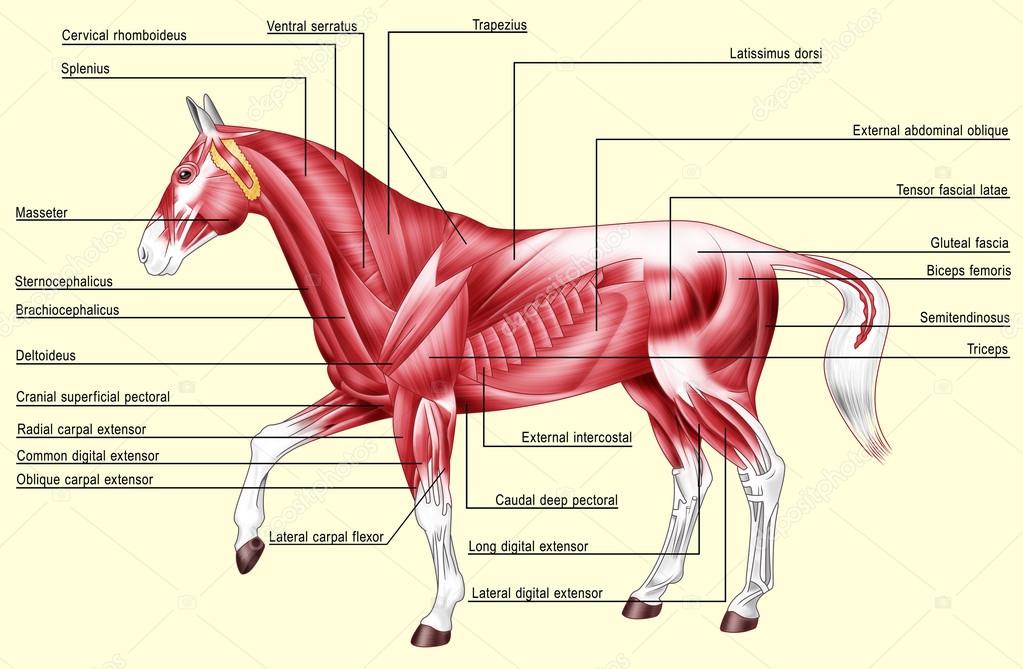Most of the horses on my roster are Dressage horses, but this also applies to Show Jumpers. A good jumper has good flat work which creates strength in the core and obliques. Dressage horses must demonstrate precision, balance, and flexibility during complex maneuvers. While core strength is essential, there’s one set of muscles that plays an outsized role – the obliques. These overlooked muscles are key to dressage success. You, the rider, need strong obliques as well.
What are the Obliques?
Take a moment to look at the photo so you can familiarize yourself with these important muscles. They are a pair of abdominal muscles that run diagonally down each side of the torso. Not visible from the outside but crucial for stabilization and bending. Not only for your horse, but for YOU as well.
The Obliques in Action
The purpose of the obliques is to engage the bend in the horse’s spine side-to-side and allow the horse to bend evenly in movements like shoulder-in and half-pass. They provide stability for lateral movements like the pirouette while giving the horse power and impulsion from the hindquarters. For you, strong obliques keep you from collapsing in the saddle and causing undo pressure on your horses back. They allow you to operate independently from your upper and lower body.
Why Obliques Matter in Dressage
Dressage requires asymmetrical strength and flexibility while the obliques allow the horse to bend in one direction at a time. Engaging obliques properly shifts the horse’s center of gravity. This is demonstrated in our Dressage Training Pyramid. As you go up the levels, in theory your horse should be getting stronger. Weak obliques lead to crooked movements, loss of balance, often creating asymmetrical musculature. I often think of Ballroom dancing. There is never one partner holding up the other while trying effortlessly to get through graceful movements. This is true in riding no matter what the discipline.
How to Strengthen the Obliques
Riding transitions from walk to canter focuses oblique engagement and leg yields target and condition the oblique muscles. I love good cavaletti work, because it encourages lifting and bending the ribcage. It’s also something different for your horses mind. If you’re lucky enough to have hills where you train your horse then hillwork is great for emphasizing hindquarter engagement because it uses the obliques.
As a bodyworker, I love working on the obliques and the horses always appreciate it. Most my riders notice the extra flexibility in their horses bend after a massage session. Dressage horses need strong obliques to master the one-sided flexibility and balance required in the ring. Riders should incorporate targeted oblique training into their horse’s regular conditioning routine. With proper strength, horses activate their obliques to perform graceful, harmonious dressage maneuvers. Riders should also incorporate their own workout routine that includes strengthening their obliques.

